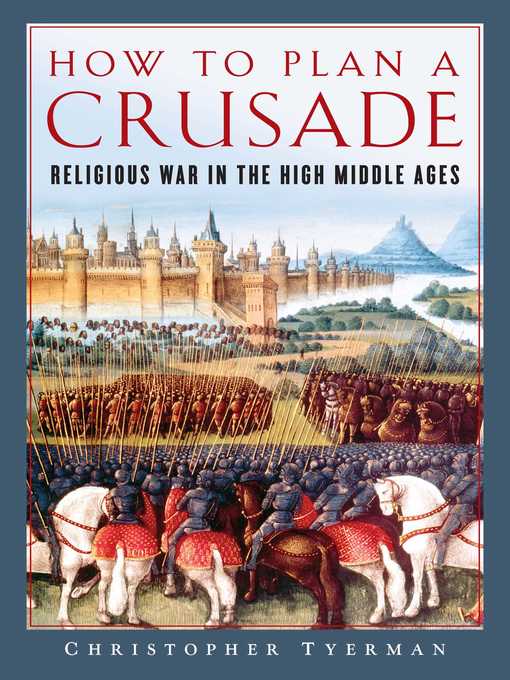
How to Plan a Crusade
- اطلاعات
- نقد و بررسی
- دیدگاه کاربران
نقد و بررسی

August 1, 2017
Tyerman (God's War: A New History of the Crusades) looks at the logistical and planning activities of the Crusades, arguing that the wars were not irrational follies of religious peasants but rather carefully planned campaigns of moneyed individuals. He reframes his analysis of the events into five major areas, opening with the idea that the medieval period contains many examples of rationality. He then discusses the reasons Crusaders went to war and the culture which influenced the decision. Propaganda such as sermons, pamphlets, and assemblies also played a key role in the recruitment of warriors. Tyerman analyzes the standard types of recruits and shows that most were wealthy men, although some women attended. Additionally, he evaluates the finances of the campaigns, including budgets and troop pay before concluding the narrative with logistics surrounding supplies, ordinances, and campaign strategy. This detailed analysis assumes prior knowledge of both the Holy Land and Baltic Crusades as well as key figures. VERDICT An intriguing yet somewhat dry analysis of the Crusades. Recommended for scholars and medieval history aficionados.--Rebekah Kati, Durham, NC
Copyright 2017 Library Journal, LLC Used with permission.

August 15, 2017
Overhauling the notion of the Medieval Ages as a time of zealotry and ignorance and examining the nuts and bolts of crusading.By concentrating on the "prosaic methods" of crusading rather than on the drama of the campaigns, as historians have traditionally done, Crusades expert Tyerman (History/Univ. of Oxford; The Debate on the Crusades 1099-2010, 2011, etc.) manages to demythologize the process. The outcomes of the Crusades--usually not good, and the author lays out the other numerous smaller ones in addition to the five big ones, from 1096 to the 1290s--do not concern Tyerman as much as the details of planning: recruitment, finance, logistics, supplies, etc. While the author concedes that the recruitment for these massive undertakings required the creation of a religious justification--e.g., "God wills it," and warriors were assured of a spiritual as well as material reward--the effective propaganda by religious leaders instilled in volunteers a sense of military urgency, even revenge. The missions served as holy wars to push back the threat to the order of Christendom in the Mediterranean especially. The Crusades also tightly involved the culture of the ruling aristocratic elite, expressed through the concept of chivalry, and required persuasion and propaganda by itinerant preachers at local assemblies and open-air sermons to sign up the necessary volunteers. Tyerman uses the examples of two such 12th-century preachers--Henry of Marcy and Gerald of Wales--to illustrate these methods. Much of Tyerman's work is a fascinating but dense catalog of logistics, including who actually went on crusade (the aristocrats and their retinue, as well as women), where the money came from, and what kind of massive supplies were needed, as delineated so beautifully in the Bayeux Tapestry. The narrative may leave lay readers not familiar with the specific Crusades bewildered, but overall, Tyerman provides a compelling, vivid sense of a lively, pragmatic, driven, and highly organized society. A fresh way to envision the Medieval era.
COPYRIGHT(2017) Kirkus Reviews, ALL RIGHTS RESERVED.




دیدگاه کاربران